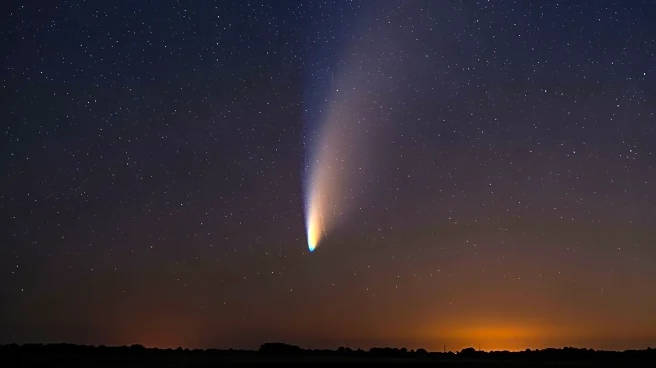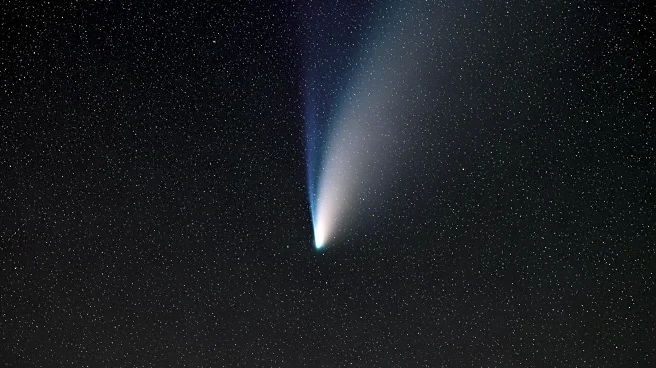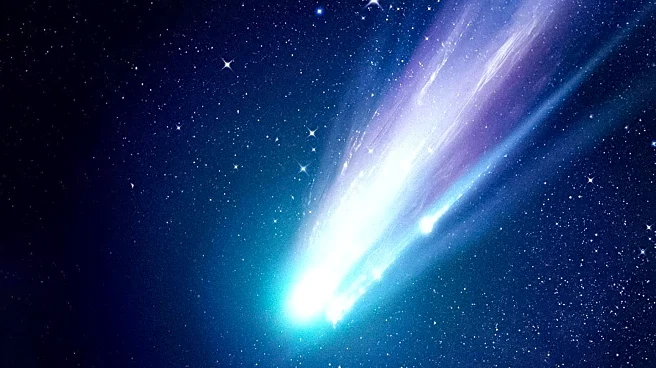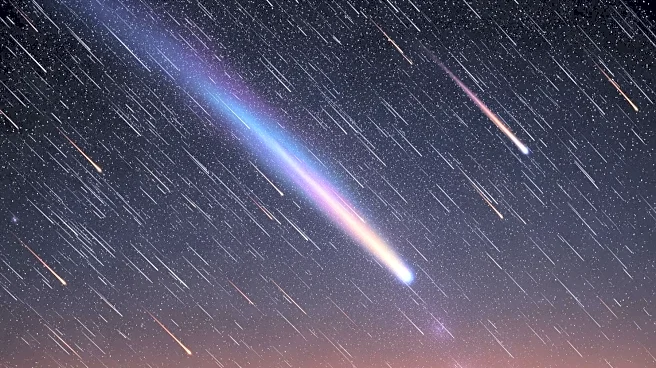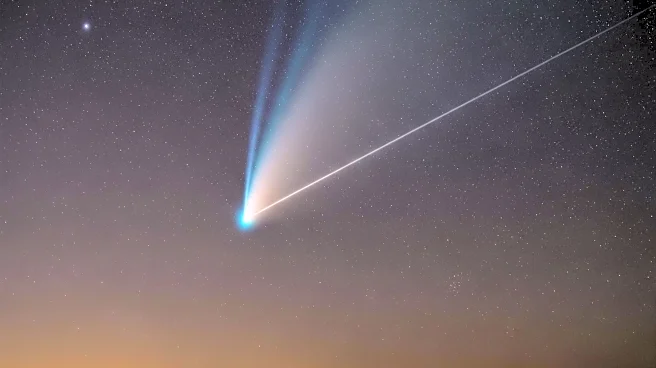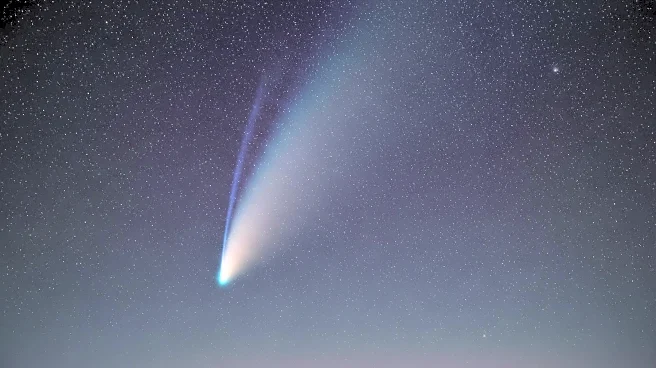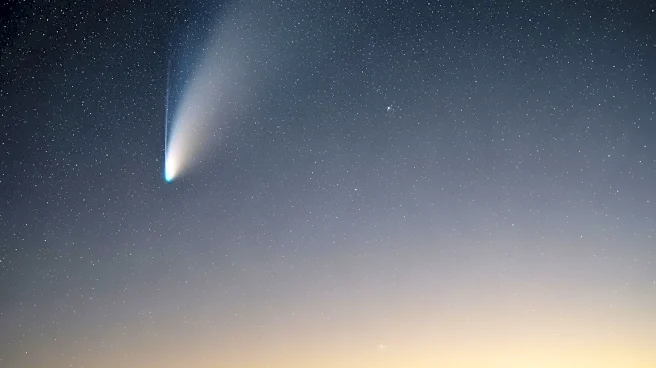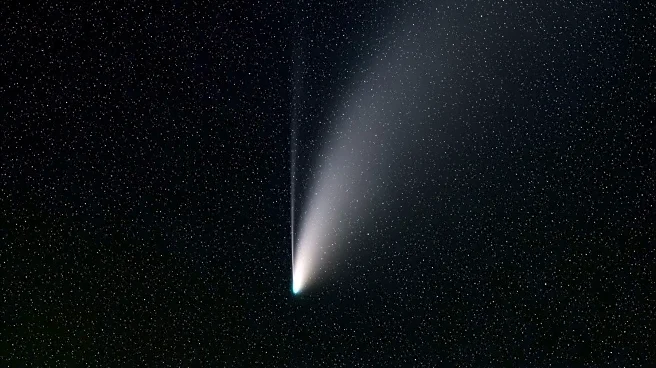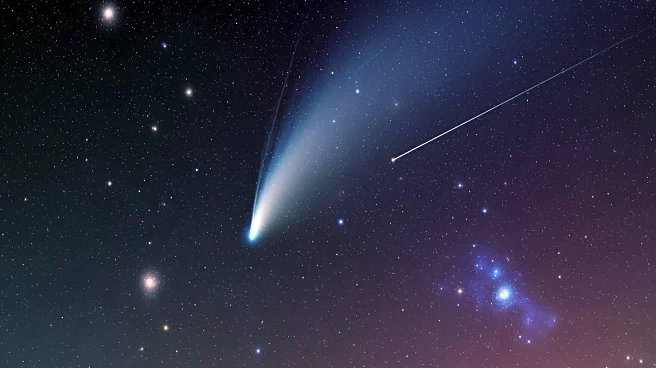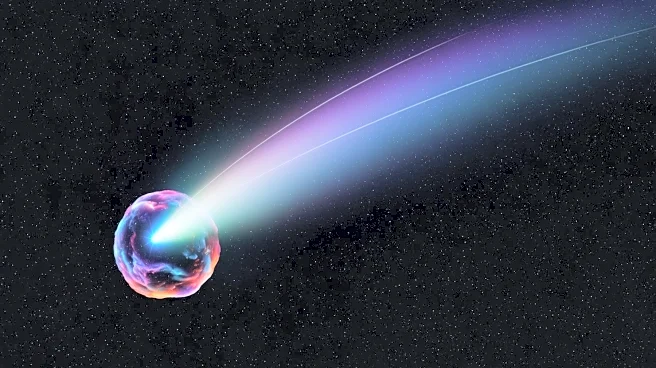What's Happening?
Comet Lemmon, known as C/2025 A6, was photographed by Lukasz Sledzinski over Breydon Water, Great Yarmouth. The comet, discovered in Arizona on January 3, 2025, is set to reach its closest point to Earth
on October 21, at a distance of 55.4 million miles. Currently, it is visible at a magnitude of +5.2, making it potentially observable to the naked eye under dark skies. The comet features a blue-ish tail, appearing roughly double the diameter of the moon, and is best viewed shortly after sunset with binoculars.
Why It's Important?
The visibility of Comet Lemmon provides a unique opportunity for both amateur and professional astronomers to study its characteristics and trajectory. The comet's approach is a rare event, occurring once every 1,350 years, emphasizing the importance of capturing and analyzing such phenomena. This event can enhance public interest in astronomy and support local businesses that cater to stargazing activities, promoting educational and recreational opportunities.
What's Next?
As Comet Lemmon continues its orbit, it will move closer to the Sun, increasing its brightness due to the release of gas and dust. Observers are encouraged to take advantage of the viewing window before the comet becomes difficult to see due to solar glare. The comet's journey will eventually lead it back to the outer solar system, not to return for over a millennium.
Beyond the Headlines
The event highlights the role of amateur astronomers in contributing to scientific knowledge and the importance of preserving dark skies for astronomical observations. It also underscores the cultural and educational value of celestial events in fostering community engagement and interest in science.
